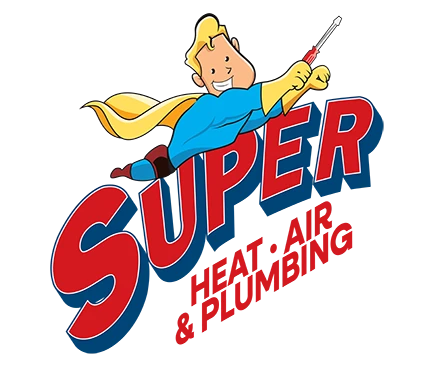Now that the weather is getting cooler, there may be times that you need to turn on the heat, even though we live in a warm climate here in Tampa Bay. If your gas furnace shuts off unexpectedly or it isn’t blowing warm air, you’re in the right place!
Check out this guide from Super Heat, Air, and Plumbing on how to troubleshoot your gas valve, but if you can’t get it working, don’t worry, give us a call!
What to Know About Furnace Gas Valves
The gas valve is an essential component within your furnace and opens and closes based on your thermostat settings to provide a flow of gas to the pilot light and the burners to keep your home warm and cozy.
You will only find gas valves on gas-powered forced air systems, so if you have a different furnace, this article, unfortunately, won’t help you. But if you have a gas furnace, keep reading.
Furnace gas valves are wired to a solenoid. In your furnace, the solenoid is an electronic component that receives signals from the thermostat control. This causes the gas valve to widen or narrow in response to changes in your home’s temperature and heat your home.
If the temperature in your house falls below your set temperature on your thermostat, the gas valve will open to activate the furnace and produce heat. When your house reaches the desired temperature, another signal causes the gas valve to close.
MORE: Central Heat Not Working…Now What?
How a Furnace Gas Valve Works
Your furnace requires two separate gas valves to operate. They are located next to each other but do very different tasks. The first, known as the primary valve, is also called the safety valve and is responsible for sending gas to the pilot light. The secondary valve is called the main and sends gas to the burner heads. This is the valve that we will be taking a closer look at.
Modern furnace gas valves are actuated by electromagnets to open and close and to operate these electromagnets, a thermocouple is mounted within the flame of the pilot light. If the pilot light goes out, the thermocouple cools and the primary valve closes, thus preventing the flow of gas to your home, hence the name “safety valve.”
The main valve’s thermocouple is powered by a 24-v AC transformer. This active power supply is necessary because the secondary valve is connected to a much wider pipe than the pilot light.
The gas valves are wired with multiple failsafe devices within the system so that if a problem is detached at any point, the main gas valve will close to prevent a gas leak.
If there is a problem with your gas valve, testing with a simple multimeter will let you know if it is working properly.
MORE > Gas Furnaces vs Electric Furnaces
Checking the Gas Valve
Before checking the gas valve, make sure that you have a socket set and a multimeter on hand. Now, let’s check that gas valve!
Step 1 – Turn off the furnace at the wall control **IMPORTANT**
Turn off the furnace at the wall control. Wait for the unit to cool off if it has been running.
Step 2 – Find the gas valve
On the side of the furnace, locate the bolts of the service panel and unscrew them with your socket wrench. Find the gas valve, which is typically located near the bottom of the unit next to the pilot light.
Look on either the top or side of the gas valve for the two wires that are clipped to the solenoid.
Step 3 – Pull the wires off the gas valve terminals
Each wire is connected to a push-on clip that should easily slide off the terminal, pull them off the gas valve terminals, and write down where the wires connect to the valve to make it easy to reattach them later.
Step 4 – Test the control
Turn the test control on your multimeter to mV or millivolt.
Step 5 – Read the result
Hold each tester wand on your multimeter to one of the terminals on the gas valve. A normal reading will show a range of 145-195 millivolts. If you see an mV reading outside of this range, it indicates that the gas valve is likely defective and needs to be replaced. Unfortunately, furnace gas valves cannot be repaired.
RELATED> Should You Invest in a Heat Pump?
Gas Furnace Problems? You Know Who to Call!
If you are having trouble with your gas furnace or are unsure about troubleshooting your gas valve on your own, don’t worry, call our team at Super Heat, Air, and Plumbing! We are just a phone call away and with our Super Fast Guarantee, we will be there within an hour to diagnose your furnace problem so you can get back to comfort.



